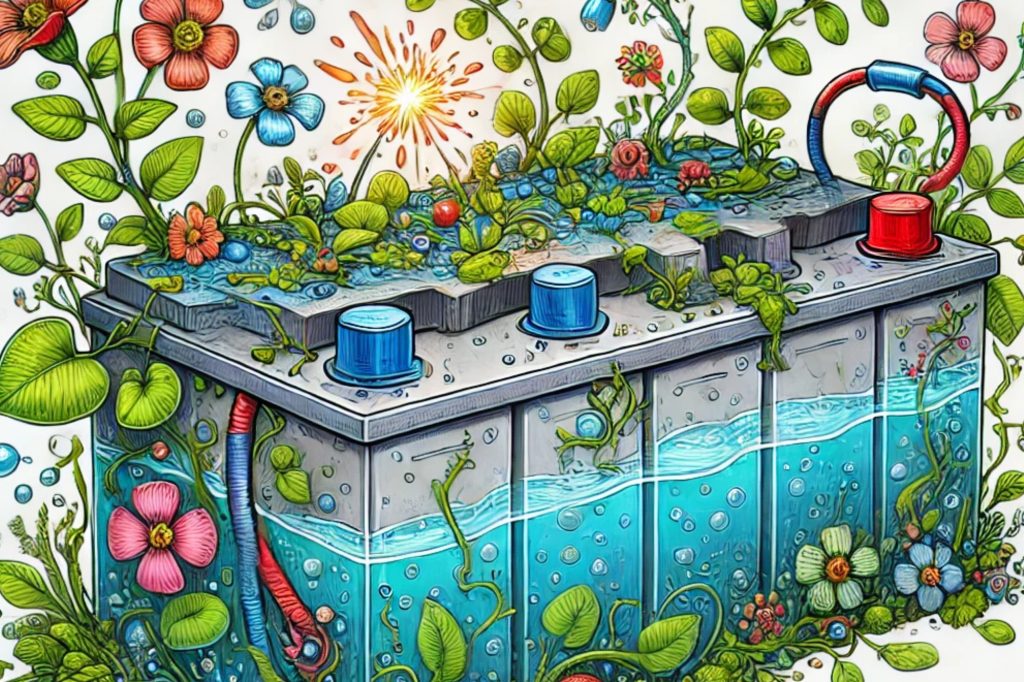Chapter 4: Phosphorus
Chapter 4: Phosphorus

In every vehicle, power is nothing without control. Engines produce raw energy, but it’s the electrical system—charged and balanced by the battery and alternator—that distributes that power where it’s needed. From spark timing to dashboard electronics, the battery ensures everything functions in sync.
Phosphorus plays the same role in plants. It’s the power distributor. It stores energy, moves it, and ensures it’s delivered exactly where and when it’s needed for growth, repair, and survival.
Phosphorus = Stored and Distributed Power
As plants harvest sunlight, they convert it into two key forms of biochemical energy: ATP (adenosine triphosphate) and NADPH. These molecules are energy carriers, and both rely on phosphorus.
ATP is the most well-known energy currency in biology. It’s like a rechargeable battery, constantly charged and discharged as energy is needed. NADPH, meanwhile, carries high-energy electrons used in carbon fixation and other biosynthetic pathways. Both are created through the light reactions of photosynthesis and used in the Calvin cycle.
Without phosphorus, neither molecule exists. And without them, there’s no power flow within the plant engine.
Phospholipids: The Electrical Wiring
Beyond energy molecules, phosphorus is also foundational to phospholipids—the molecules that make up cellular membranes. Think of phospholipid bilayers as the electrical wiring harnesses of a plant cell. They don’t just hold the energy-producing components in place—they help create the voltage gradients needed to drive reactions.
Embedded in these membranes are the proteins that form the electron transport chains in chloroplasts and mitochondria. These chains move electrons in a controlled way to generate ATP, just like wires channel current through a circuit.
Without the insulating and structuring function of phospholipids, there’s no charge separation. And without charge separation, there’s no energy production.
Membrane Polarity = Voltage Potential
A battery works because it maintains a difference in electrical potential between its terminals. In plant cells, membranes do the same thing. The arrangement of phospholipids creates a hydrophobic barrier that prevents ions from freely passing through, allowing gradients to form.
These ion gradients—especially proton gradients—are central to powering ATP synthase, the enzyme that makes ATP. It’s the same principle behind an electrical system delivering power to specific outputs when needed.
Phosphorus allows these gradients to exist, and therefore allows energy to be produced and distributed throughout the plant.
More Than Just Energy: Phosphorus and Biosynthesis
Phosphorus isn’t just a wire or a battery—it’s also part of the code. DNA, RNA, and many metabolic intermediates contain phosphate groups. That means phosphorus helps carry not just energy, but information.
It’s involved in turning energy into form, helping plants grow new tissue, store energy as starch, and respond to environmental signals.
The Takeaway
Phosphorus is the unsung hero of the plant’s power grid. It carries energy, helps store it, and makes sure it flows where it’s needed. Without it, the photosynthetic engine doesn’t just slow down—it stalls completely.
Next up: Potassium — The Fuel Pump and Transmission of Plant Physiology.
You must be logged in to post a comment.

